Applying what Jon contributed above, you can customize this function to your data as follows.
Again it's difficult to know completely what your underlying data look like, but let's assume that your field, FieldType, contains three factors: BSSFields, CSSFields, DSSFields.
# Load data
library(tidyverse)
native <- read.csv("native.gather.C4C5C6C7.csv")
# Define function
lm_eqn <- function(df){
m <- lm(PercentNative ~ YearsPostRelease, df);
eq <- substitute(italic(native) == a + b %.%
italic(YearsPostRelease)*","~~italic(r)^2~"="~r2,
list(a = format(coef(m)[1], digits = 2),
b = format(coef(m)[2], digits = 2),
r2 = format(summary(m)$r.squared, digits = 3)))
as.character(as.expression(eq));
}
# Plot data
ggplot(native, aes(x = YearsPostRelease,
y = PercentNative,
col = FieldType,
linetype = FieldType)) +
geom_point(size=0.7) +
geom_smooth(data = native,
method ="glm", alpha = 0, show.legend = FALSE, linetype = 'solid') +
scale_x_continuous(breaks = c(0, 5, 10, 15, 20, 25, 30, 35, 40, 45, 50, 55)) +
scale_y_continuous(limits = c(0, 100),
breaks = c(0, 10, 20, 30, 40, 50, 60, 70, 80, 90, 100)) +
annotate("text", x = 3, y = 30,
label = lm_eqn(native %>% filter(FieldType == "BSSFields")), parse = TRUE) +
annotate("text", x = 4, y = 20,
label = lm_eqn(native %>% filter(FieldType == "CSSFields")), parse = TRUE) +
annotate("text", x = 5, y = 10,
label = lm_eqn(native %>% filter(FieldType == "DSSFields")), parse = TRUE)
ggtitle("Percent Native Through Time")
It's important to note that the location of these regressions equations will have be modified based on the range of YearsPostRelease and PercentNative. Also, if FieldTypes contain more than three levels, you'll have to add corresponding annotate() calls, customized to the level name.
